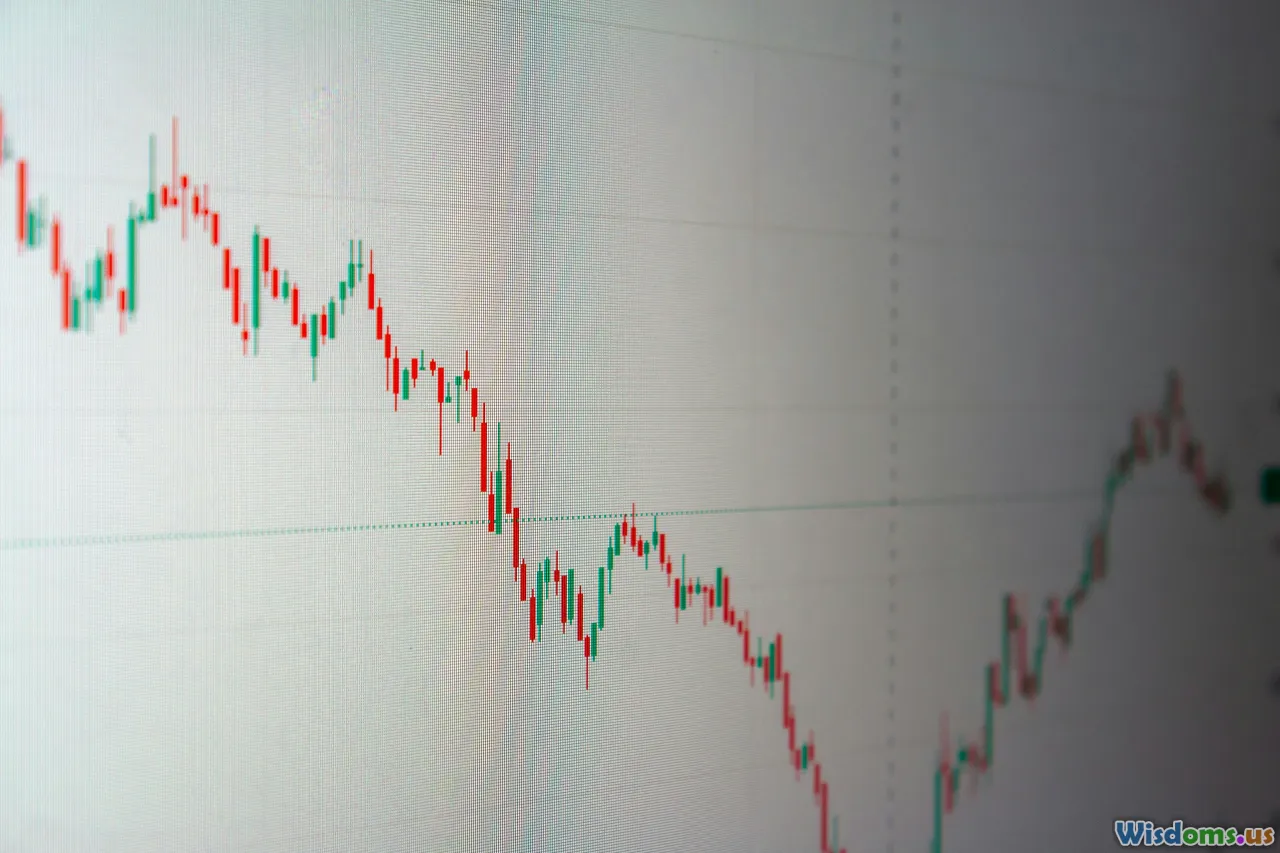
Hedging Strategies That Protected Investors During Market Crashes
17 min read Explore effective hedging strategies that safeguarded investors’ portfolios during market crashes, with examples and expert insights. (0 Reviews)
Hedging Strategies That Protected Investors During Market Crashes
Market crashes—those stomach-churning drops that rattle even seasoned investors—have long been an unwelcome feature of financial markets. History is studded with shocks such as the 1987 Black Monday, the tech bubble burst of 2000, the 2008 Global Financial Crisis, and the 2020 COVID-19 panic. Yet, some investors not only weathered these storms, they emerged comparatively unscathed or even ahead of the curve. What was their secret? Often, it was the artful use of hedging: tactics designed to offset potential losses.
Let’s delve into the methods that have reliably shielded portfolios when chaos reigned.
The Power of Portfolio Diversification

Any discussion about hedge strategies starts with the backbone of risk management: diversification. The principle sounds old-fashioned, even quaint, yet it is the bedrock of protective investing.
At its core, diversification means spreading investments across uncorrelated (or weakly correlated) asset classes. During market crashes, diversification doesn’t always guarantee overall positive returns; instead, it aims to reduce the blow.
Famous Example: The 2008 Crisis
In the 2008 crash, widely held assets like US stocks plummeted, but portfolios holding a significant allocation to US Treasury bonds, gold, or certain international assets fell far less steeply or even gained in value. A classic 60/40 stock-to-bond strategy, for instance, suffered much smaller losses than pure equity portfolios, as high-grade bonds rallied while shares collapsed.
Why It Works
Market crashes rarely sink every single asset simultaneously. Government bonds tend to benefit from a "flight to quality," while gold is seen as a store of value during turmoil. Holding these lifeboats can deliver capital preservation, providing liquidity to re-enter risky markets at post-crash lows.
Options-Based Hedges: Protective Puts and Collars

Another well-known method for preemptively protecting wealth is through listed options.
Protective Puts: The Classic Downside Shield
A protective put involves buying put options on stocks or indices already owned. A put gives the right—but not obligation—to sell at a specified price, limiting maximum loss to the price paid plus the premium.
Case Study: Dot-com Bust (2000-2002)
Some tech-focused institutional investors, sensing valuations had gone too far, purchased S&P 500 or NASDAQ put options. As the market unraveled, these puts surged in value, buffering massive equity losses. Even Berkshire Hathaway reportedly utilized index options to hedge its vast equity exposure in certain periods.
Collar Strategy: Downside Protection with Cost Control
Writing a call option while buying a protective put creates a collar. The premium from the call partially or fully offsets the put’s cost. The trade-off? Potential gains are capped, but so are losses. This is a staple among pension funds and cautious investors seeking predictable outcomes in extreme markets.
Risk-On Risk-Off: Asset Class Rotation

Shifting between risky and safe assets—often labeled "risk-on, risk-off" investing—can provide active crash insurance.
Dynamic Allocation in Action: 2020 COVID Crash
February to March 2020 saw US equities crash over 30% in weeks. Systematic strategies rotated into safe havens such as US Treasuries, gold, and defensive utilities stocks. Firms using tactical asset allocation moved to bonds and cash, then cautiously re-entered equities post-recovery. The sharp rotations out of risk and back in are akin to standing in front of a tsunami, then hopping onto the next wave.
Challenges and Caveats
While promising, rotating assets introduces timing risks. Short-term opportunities abound but getting whipsawed is a real danger; tactical shifts should be based on objective signals, not gut feelings. Still, data-driven risk management models and algorithms delivered outperformance for managers who acted swiftly in spring 2020.
Volatility as a Hedge: Long VIX and Tail Risk Funds

When markets panic, volatility surges. Tools like VIX derivatives provide a direct way to hedge against spikes in turbulence.
Example: Volatility Surges in the 2008 and 2020 Crashes
The S&P 500 Volatility Index (VIX)—"the Fear Gauge"—typically rises when equities fall. VIX futures and options funds, as well as specialized "tail risk" products, aim to deliver strong returns during sudden market drops. In March 2020, tail risk funds managed by Universa Investments and others scored yearly returns exceeding 4,000% during the crash, though at substantial cost for holders over quieter periods.
Practical Constraints
These instruments work best as a partial portfolio allocation; costs mount during quiet markets due to "volatility decay." Successful usage requires discipline to maintain the hedge and accept that most of the time, it will lose money (much like fire insurance).
Gold and Real Assets: Physical Anchors in Stormy Seas

Throughout history, gold has shone brightest amidst financial panic. Every crash sees a renewed interest in tangible assets perceived as outside the financial system.
Real-World Performance
- Global Financial Crisis (2007-2009): Gold rose around 25% while equities fell more than 50% at the worst point. Investors flocked to physical and exchange-traded gold.
- COVID Crash (2020): Gold briefly spiked, then stabilized as central banks unleashed massive stimulus; it outperformed stocks and even some traditional safe bonds during acute downdrafts.
Beyond Gold: Other Real Asset Hedges
Certain real estate, commodities (like oil after initial sharp falls), and inflation-indexed bonds have sometimes acted as partial hedges, though their reliability varies by crisis type.
Short Selling and Inverse ETFs: Profiting from Declines

A more aggressive, direct hedge strategy is to profit from falling markets using shorts and inverse products.
Shorting Stocks & Indices
This involves borrowing shares or index ETFs to sell them, profiting if prices fall. Hedge funds like Paulson & Co. famously shorted subprime mortgage instruments in 2007-2008, realizing billions as toxic assets collapsed.
Inverse and Leveraged ETFs
For most retail investors, directly shorting assets poses risks such as unlimited losses and margin calls. Inverse ETFs simplify this process: they aim for the opposite of an index's daily returns. During crises, spikes in the trading volumes of funds like ProShares Short S&P 500 (SH) or UltraShort QQQ are common, though they come with compounding and decay risks if held long-term.
Cautions
Short strategies can bite back abruptly in sudden rallies (the so-called "short squeeze"). Inverse ETFs are not suitable for buy-and-hold hedging; they're tactical instruments and require regular adjustment.
Managed Futures and Trend Following: Momentum Amid Mayhem

Trend-following strategies—using managed futures or Commodity Trading Advisors (CTAs)—exploit momentum across multiple markets.
Success During Dislocations
In both 2008 and 2020, systematic trend followers made rapid shifts from long equities to short positions and exploited rising bond prices as yields plunged. The Société Générale CTA Index—a benchmark for trend-following funds—rose over 20% during 2008 as equity indices plunged.
Why This Works
Big moves tend to persist during deep crashes; trend systems latch onto these, profiting from panics rather than falling victim to panic selling themselves. Mechanical rules prevent emotional trading errors that torment individuals during frenzied sell-offs.
Tail Risk Insurance: Specialized Crisis Protection

True financial devastation comes in extremes—the “tails” of market return distributions. Some managers dedicate a portion of capital to buy explicit tail risk insurance.
How Tail Risk Hedging Operates
These funds systematically buy out-of-the-money puts or structure highly asymmetric trades that cost little but deliver huge payoffs in rare crises. Universa Investments and Empirica Capital (founded by Nassim Taleb), have specialized in this area, as have pensions seeking protection against once-in-a-generation meltdowns.
Real Life: 2020 Crash Again
In 2020, Universa’s tail hedges returned thousands of percent, more than compensating for years of slow bleed in premiums. The main challenge remains psychological: it's hard to hold onto an insurance policy that typically loses small amounts in most conditions, tempting managers to drop it just before it's suddenly needed.
Currency Hedges: Defending Against Global Turbulence

Markets crash globally, but currencies do not all move together. Strategic currency positioning can insulate cross-border investors from both asset and FX shocks.
Historical Example: Asian Financial Crisis (1997-1998)
Southeast Asian stocks were crushed, but the real pain came from currency devaluation. Investors using dollar or yen-denominated hedges (for instance, via futures contracts or hedged ETFs) offset their local asset losses, bluntly demonstrating currency risk’s sometimes massive impact.
Modern Approaches
Many global funds use rolling forward contracts or currency overlay funds. These provide insurance when their own local currency or a target market’s currency collapses independently of asset values.
Behavioral Hedging: The Value of Discipline And Policy

Hedges are not always found in financial products. Policy and psychology—the human side—can be a surprisingly robust shield.
Automating Discipline
Pre-set rules, rebalancing schedules, and hardcoded risk limits prevent the emotional errors that destroy performance during sharp downturns. Rebalancing portfolios back to their targets after sharp declines (i.e., “buy low, sell high”) forces investors to trim appreciated assets and add to declines, paradoxically exploiting panic rather than falling victim to it.
Pension and Endowment Best Practices
Elite institutions are often protected not just by what they hold, but how they act.
- Yale Endowment Model: Focuses on illiquid, alternative assets and long-term cycle smoothing, continuously rebalancing based on allocation policy rather than market outlook.
- Norwegian Government Pension Fund: Employs a rules-based rebalancing policy with explicit triggers to prevent panicked asset sells.
Discipline is a “soft” hedge, but indispensable in bear markets.
Practical Tips for Building a Resilient Portfolio

While not every investor can engage in complex derivative or institutional hedging, there are core principles anyone can apply:
- Spread Your Bets: Diversify across national markets, asset types, and currencies where possible.
- Use Options Wisely: Consider simple option strategies (protective puts or collars) on larger holdings when volatility is low.
- Dedicate a Small Allocation to Tail Risk: Accept a known cost for deep crisis insurance; a single successful payout can offset years of small premium losses.
- Embrace Systematic Rules: Schedule regular portfolio reviews to rebalance—this process-driven approach outperforms panic-driven reactions.
- Stay Educated and Nimble: Know the range of protective tools available; market conditions change, so staying current matters.
While no strategy is failproof, portfolios anchored in robust hedges and sound psychology prove repeatedly more resilient during chaos.
A shrewd, well-prepared investor never bets against the possibility of turmoil—and the best know that true defense is both art and science. Historically-proven hedging strategies aren’t just lifeboats during a storm; they provide confidence and flexibility to seize opportunities when the clouds start to clear.
Rate the Post
User Reviews
Popular Posts




















